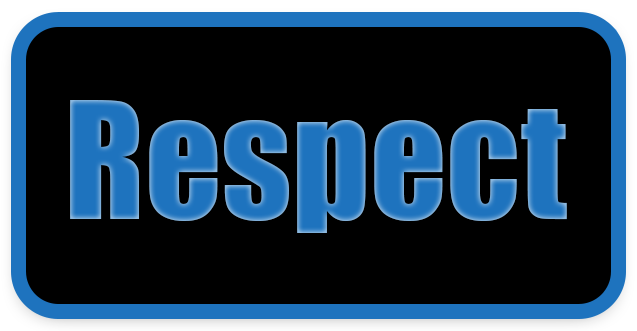⏲️ Estimated reading time: 13 min
What’s your favorite word?
Respect: The Life Skill That Multiplies Everything
Respect is my favorite word because it changes every interaction: with yourself, with loved ones, at work, and online. This in-depth guide shows how respect functions, why it’s hard, and how to practice it daily with practical scripts, tools, and rituals.
Why “Respect” Is My Favorite Word
If you gave me one word to build a life on, it would be respect. Not talent, not luck, not hustle but respect. Indeed, it is the quiet multiplier behind healthy relationships, meaningful careers, resilient communities, and an unshakable sense of self. In other words, respect is not simply politeness or fear dressed in formal clothes. Rather, it’s a way of seeing: I see your humanity, your time, your boundaries, your effort and mine too.
When respect is present, everything else becomes easier. For example, feedback lands more clearly, trust grows naturally, conflict cools faster, and creativity flows without resistance. Conversely, when respect is absent, even the simplest tasks can quickly turn into a tug-of-war. Therefore, understanding respect is not just optional it is essential.
This post is a deep dive into what respect really is. Moreover, we will explore how it operates across different life domains personal, professional, and digital. In addition, you will discover why respect functions as the foundation of both trust and growth. Most importantly, you will learn how to practice it consistently so that it becomes a habit, and ultimately, shapes your character in ways that enrich both your life and the lives of those around you.
What Respect Is (and Isn’t)
Respect is:
- Recognition: Seeing the inherent dignity in yourself and others.
- Boundaries: Understanding where you end and others begin.
- Behavior: Consistent actions aligned with values, even under pressure.
- Curiosity: A stance of “help me understand” instead of premature judgment.
- Courage: Saying the hard truth with care; saying “no” without guilt.
Respect isn’t:
- Fear or intimidation. People may comply, but they won’t trust or create.
- Agreement. You can respect someone you strongly disagree with.
- Flattery. Sugar on top doesn’t fix contempt underneath.
- Transactional politeness. Courtesy without sincerity collapses under stress.
The Two Pillars: Self-Respect and Other-Respect
Think of respect as a bridge with two pillars. If either pillar cracks, the bridge fails.
Pillar 1: Self-Respect
Self-respect means you don’t outsource your worth to likes, trends, or shifting opinions. You keep promises to yourself, protect your energy. You own your mistakes, say “no” to the wrong yes.
Practice cues:
- Body: Notice when your shoulders slump or your jaw tightens signals you’re crossing your own line.
- Time: Schedule deep work blocks and actually defend them.
- Voice: Replace “Sorry to bother you…” with “Do you have 10 minutes to discuss X?”
- Standards: Establish your “Minimums”: sleep, movement, honest work, and kind speech. Keep them.
Pillar 2: Respect for Others
Other-respect is not submission; it’s the discipline of honoring someone’s personhood. You can be firm and kind in the same sentence, listen to understand, not to reload. You argue with ideas, not identities.
Practice cues:
- Presence: Phones down during conversations signal “you matter.”
- Pronouns and names: Use them correctly signal “I see you.”
- Credit: Attribute ideas publicly signal “I value your contribution.”
- Privacy: Ask consent before sharing stories that aren’t yours signal “I’m trustworthy.”
The ROI of Respect
- Trust compounds. People share more information and risks with those who handle both carefully.
- Time shortens. Clarifying expectations upfront prevents weeks of repair.
- Quality improves. Honest, respectful feedback refines work faster than bland approval.
- Resilience rises. Respectful teams recover from conflict because they don’t personalize everything.

Respect in Relationships: Love’s Quiet Engine
Healthy love runs on respect. Attraction starts the story; respect keeps it from becoming a tragedy.
Habits that protect intimacy:
- Repair quickly. “I’m sorry for how I said that. The impact was hurtful. Can we retry?”
- Assume good intent; verify impact. Lead with generosity, then discuss facts.
- Boundary clarity. “I love you. I won’t stay for shouting. We pause and revisit.”
- Private loyalty, public honor. Disagree in private, defend in public.
- Rituals of attention. Daily 10-minute check-ins; weekly planning dates; tech-free meals.
Mini-script for tense moments:
“I want to understand your view and I also need to share mine. Can we take five minutes each to speak without interruption, then reflect back what we heard?”
Respect at Work: The Culture You Feel but Can’t Fake
A job description lists tasks; a culture defines how humans will treat each other while they do them. Respect is the non-negotiable operating system.
Leadership moves:
- Expectations in daylight: Document goals, owners, timelines, and decision rules.
- Feedback hygiene: Normalize bi-directional feedback: “What’s one thing I could do 10% better?”
- Meetings with purpose: Agenda, owner, timebox, and clear next steps or cancel it.
- Credit and critique: Praise in public with specifics; critique in private with care.
- Psychological safety: “Disagreeing is safe here; disrespecting isn’t.”
Difficult conversation template (SBI + Ask):
- Situation: “In yesterday’s client call…”
- Behavior: “…you interrupted me three times mid-sentence.”
- Impact: “…I lost my point, and the client asked if our team was aligned.”
- Ask: “Next time, can we signal in chat and hand off cleanly?”
Respect Online: The Digital Decency Pact
The internet collapses distance and, too often, decency. Practicing respect online means carrying your offline standards into your digital footprint.
- Pause posture: If angry, draft, don’t post. Revisit in 24 hours.
- Strong claims, stronger sources: Respect readers with evidence.
- No doxxing or dog-whistling: Disagreement never justifies endangering someone.
- Credit culture: Link and attribute generously.
- Boundaries: You’re not obligated to engage with every provocation.
Three rules before you hit “publish”:
- Is it true? 2) Is it necessary? 3) Is it kind/constructive?
The Language of Respect: 12 Phrases That Change the Room
- “Help me understand your reasoning.”
- “Here’s what I’m hearing. Did I get it right?”
- “I appreciate the effort you put into this.”
- “I disagree with the idea, not with you.”
- “What would make this a win for you?”
- “I need a pause to gather my thoughts.”
- “I’m sorry for my impact; here’s what I’ll do differently.”
- “I don’t have enough information yet let me check.”
- “Thank you for the feedback; give me a day to digest.”
- “Let’s define done: what does success look like?”
- “I’m not available for that, but here’s another option.”
- “You were right thanks for pushing us to improve.”
Boundaries: Respect’s Golden Railing
Boundaries are how respect becomes visible. A boundary isn’t a wall to keep people out; it’s a rail to keep relationships on the path.
Four boundary types to clarify:
- Time: When you’re reachable; response expectations.
- Space: Work zones, quiet hours, tech-free tables.
- Energy: Topics you’ll engage, behaviors you won’t.
- Information: What’s private, what’s shareable.
Boundary statement formula:
“I value X, so I need Y. If Z happens, I will [consequence].”
Example: “I value calm conversations, so I need us to lower voices. If yelling starts, I’ll take a 20-minute break and we’ll reschedule.”
The Most Respectful Way to Disagree
Disagreement is inevitable; disrespect is optional. Use this three-step practice:
- Steelman first. Present their argument in its strongest form.
- Locate the crux. What would change your mind? Ask them the same.
- Offer your model. Explain how you’re weighing evidence, values, and trade-offs.
If progress stalls, end respectfully: “We see it differently and that’s okay. Thank you for engaging in good faith.”
Teaching Respect to Kids (and Relearning It as Adults)
Children don’t learn respect from lectures; they learn it from mirrors the adults they watch.
- Model repair. Let kids hear you apologize sincerely.
- Label feelings + needs. “You’re frustrated because the tower fell. Want help rebuilding?”
- Offer choices within boundaries. “Two pages or three tonight?”
- Name the value. “In our family, we respect people’s time. That’s why we leave 10 minutes early.”
Adults relearn the same lessons when we swap control for connection and compliance for cooperation.
Respect Across Cultures: Humility First
Respect wears different clothes around the world eye contact norms, greeting rituals, gift customs, hierarchy signals. When entering a new cultural space, lead with humility:
- Learn how people prefer to be addressed.
- Ask about meeting etiquette and decision-making norms.
- Observe before you optimize fit in before you try to improve.
Curiosity is the universal dialect of respect.
When Respect Is Tested
Respect matters most when stakes are high and tempers run hot. Here are four common stress tests and how to pass them.
1) Under Pressure and Deadlines
- Pre-agree on “crunch rules”: no shouting, no blame, daily debriefs, clear ownership.
- Protect sleep cycles; exhausted teams become disrespectful teams.
2) In the Face of Disrespect
- Don’t mirror contempt. Set the standard you want.
- Name it calmly: “That language isn’t okay with me. Let’s reset.”
- If needed, exit: “This conversation isn’t productive. I’ll revisit when we can be respectful.”
3) During Mistakes
- Separate identity from action: “The plan failed” ≠ “You are a failure.”
- Own impact, outline repair, implement learning loop.
4) Across Power Gradients
- Leaders go first. The greater your power, the greater your responsibility to model respect.
- Invite challenge: “Tell me where my reasoning might be wrong.”
A 30-Day Respect Practice (Daily Micro-Habits)
1 – Awareness
- Day 1: Ask three people how they prefer to receive feedback.
- Day 2: Track interruptions aim to cut them by 50%.
- Day 3: Use names and correct pronunciation all day.
- Day 4: One conversation, zero phone glances.
- Day 5: Write your top five personal boundaries.
- Day 6: Give one specific appreciation.
- Day 7: Reflect: Where did respect feel easy/hard?
2 – Communication
- Day 8: Practice the SBI + Ask feedback model.
- Day 9: Paraphrase before rebuttal in a debate.
- Day 10: Replace “You never/always” with observations.
- Day 11: Ask, “What would a good outcome look like for you?”
- Day 12: Send a thank-you note to a mentor or colleague.
- Day 13: Decline something clearly and kindly.
- Day 14: Reflect: What script helped most?
3 – Boundaries & Repair
- Day 15: Protect one 90-minute deep-work block.
- Day 16: Define your after-hours contact policy.
- Day 17: Apologize for one old misstep; repair cleanly.
- Day 18: Say “I don’t know” when you don’t.
- Day 19: Ask for feedback on your meeting behavior.
- Day 20: Cook or share a meal listen more than talk.
- Day 21: Reflect: Which boundary lifted your energy?
4 – Leadership & Legacy
- Day 22: Publicly credit someone’s contribution.
- Day 23: Invite dissent in a team discussion.
- Day 24: Mentor someone for 30 minutes.
- Day 25: Document a process to respect others’ time.
- Day 26: Give fair, unbiased recognition.
- Day 27: Do one anonymous act of generosity.
- Day 28: Reflect: What did respect multiply this month?
- Day 29: Write your Respect Manifesto (10 lines).
- Day 30: Share your learnings with your circle.
Practical Respect Scripts for Everyday Scenarios
Declining an invite:
“Thanks for thinking of me. I’m at capacity and won’t do it justice. I’ll pass this time.”
Following up without nagging:
“Hi! Quick nudge on the proposal. Is there anything blocking a decision? Happy to help.”
Disagreeing with a peer:
“I see the upside you’re aiming at. Here’s my concern about risk. How could we test both assumptions cheaply?”
Giving tough feedback to a manager:
“I’m committed to our goals and I need to share something sensitive. When updates change last-minute, our team scrambles and quality dips. Can we align on a 24-hour freeze before client meetings?”
Responding to gossip:
“I’d rather not discuss them when they’re not here. If there’s a concern, let’s bring it to them directly.”
Respect as Daily Craft: Tools You Can Use
- The Two-Beat Pause: Before replying, inhale for two counts, exhale for two. Buy your brain four seconds of wisdom.
- The Mirror Check: After a heated exchange, ask, “Would I be proud to watch a replay?” If not, repair.
- The 1–1–1 Rule: In each meeting, commit to one honest question, one acknowledgment, and one concrete next step.
- The Gratitude Ledger: End each day noting one person you respected well and one you’ll do better with tomorrow.
When You Fail (Because You Will)
You will slip. We all do. Respect is not perfection; it’s repair. The most credible sentence in leadership is, “I was wrong.” Most magnetic is, “I’m listening.” The most transformative is, “Here’s how I’ll make it right.”
- Own it fast. Don’t outsource responsibility to circumstances.
- Name the impact. Show you understand more than optics.
- Commit to change. Describe the process, not just the promise.
- Follow through. Let your next actions be your apology’s proof.
Respect and Self-Worth: The Non-Negotiable Center
You cannot give what you don’t have. Self-disrespect often masquerades as people-pleasing, perfectionism, or aggression. Begin by respecting your own limits, dreams, rhythms, and body. Treat yourself like someone you are responsible for helping. Then, watch how naturally you extend that same standard to others.
Final Reflection
If love is the goal and truth is the path, respect is the way we walk it. It doesn’t shout, doesn’t trend. It doesn’t need a spotlight. Respect is built one boundary, one sincerity, one repair at a time. Make it your daily craft and it will multiply everything you care about: clarity in your mind, warmth in your home, trust in your team, and and this is the quiet miracle peace in your own chest.
Choose respect today. Practice it tomorrow. Protect it when it’s hard. Teach it when you can. And when you fail, return to it. That’s how we build lives and a world worth living in.
FAQs About Respect
1) Isn’t respect earned, not given?
Both. Every human deserves baseline dignity by virtue of being human. Beyond that, additional respect (trust, responsibility, access) is earned through behavior.
2) How do I respect someone whose values I oppose?
Separate person from position. Critique ideas; refuse dehumanization. Maintain boundaries while honoring their dignity.
3) What if I’m not respected back?
Lead with respect; don’t tolerate abuse. Set boundaries, escalate when necessary, and if patterns persist choose distance.
4) Does respect mean I can’t be direct?
Respect thrives on clarity. Directness plus empathy is the most respectful combo you can offer.
5) How do I rebuild respect after a breach?
Acknowledge, repair, change habits, and give time. Consistency is the currency of restored respect.
🔔 For more tutorials like this, consider subscribing to our blog.
📩 Do you have questions or suggestions? Leave a comment or contact us!
🏷️ Tags: respect, self-respect, communication, relationships, leadership, boundaries, workplace culture, emotional intelligence, conflict resolution, personal growth
📢 Hashtags: #Respect, #SelfRespect, #Communication, #Relationships, #Leadership, #Boundaries, #WorkCulture, #EmotionalIntelligence, #ConflictResolution, #PersonalGrowth
Only logged-in users can submit reports.
Discover more from HelpZone
Subscribe to get the latest posts sent to your email.

